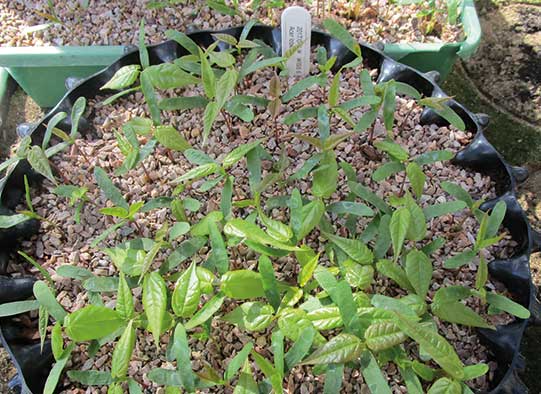Journey of a seed - Part two
In this edition, she explains how seedlings are nurtured, protected from pests and disease and finally selected for planting.
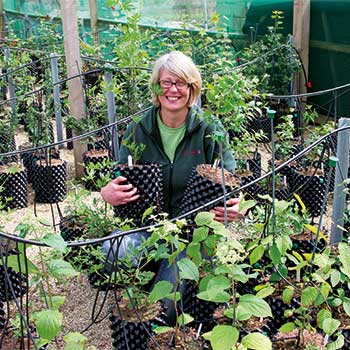
We covered germinating seeds, what happens once the seedlings are making progress?
The seeds start germinating towards spring, popping their cotyledons up above the surface. Once the true leaves start to appear I prick them out into one, or even three litre pots for fast growing species like birch, which have tiny seedlings but grow rapidly and root deeply into the pot. I move them to the growing on house, which is a greenhouse providing warmth and shelter. We have thermal shade screens to protect them from direct sunlight through the glass which also protects the plants from frost during the winter. I water all the seedlings by hand at this stage. Some need less water than others and it’s a good opportunity to check for pests and disease.
How long they stay in the growing on house depends on the species. Most stay just a few months but others won’t move until next spring. Alders, birch, sycamore and eucalyptus are all fast growing and move through the nursery quickly but others like abies, rhododendrons and hollies take a while longer.
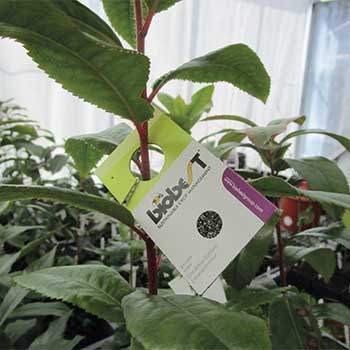
Biological pest control avoids the use of chemicals that can cause damage to our delicate local ecosystem.
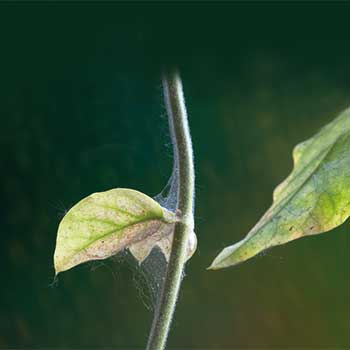
Red spider mites
Red spider mites (Tetranychus urticae) can cause serious damage if not controlled.
Where do they move to next?
The next stop is the tunnels. We have one for deciduous and one for evergreens. The tunnels have drip irrigation systems that are connected to a tap, so I time the watering for each line, usually 7 minutes is sufficient.
Do you avoid chemicals for environmental reasons?
Being considerate of our environment is certainly one reason. Chemicals can seep into the ground, affect our wildlife (especially aquatic life and bees) and can end up in waterways, so avoiding them is good practice. Also, pests can become resistant to chemical pesticides, a bit like humans and anti-biotics. All things considered, avoiding chemicals is best.
"We use biological controls for pests and disease and this is always an interesting area. By introducing organisms that prey on pests we can avoid chemical controls."
What biological controls do you use and what do they control?
We introduce parasitic wasps, Encarsia formosa, to control whitefly. It’s a slightly grizzly business as the wasp lays its egg singularly into the whitefly larvae, parasitized pupae turn black and new parasitic wasps emerge from the pupae in place of the whitefly.
We also use sachets of predatory mite, Amblyseius andersoni, to control red spider mites (Tetranychus urticae), which live on the underside of leaves and feed on the sap. They can cause serious damage if not controlled because they introduce a virus to the plant; the leaves become mottled with pale yellow spots.
In extreme cases they produce a fine webbing which covers the plant and prevents photosynthesis and that can lead to de-foliation and death. Under ideal conditions, a female can lay 4–8 eggs each day for about three weeks. The young that hatch are capable of breeding in just a few days and in very hot and dry conditions the population can balloon.
I also water nematodes into the compost around the roots on a monthly basis from April through to October. This controls black vine weevil (Otiorhyncus sulcatus), which left untreated will lay eggs on the soil, the grubs then eat the roots and chew through young stems. Vine weevils lay around 300 eggs a year, so the damage can be wide spread. A hundred adults can increase to 1 million in two years!
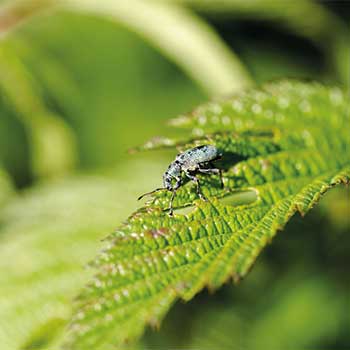
Vine weevils
All vine weevils are female and will lay about 300 eggs a year, so the damage they cause can be wide spread.
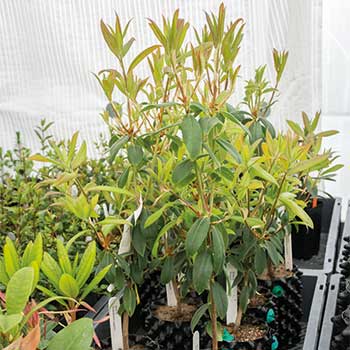
Our primary focus is to preserve and continue the Grade I listed landscape according to the English Heritage Register of Parks and Gardens of special historic interest.
When do the saplings leave the tunnels?
I check the pot bases regularly; I call it bottom checking. When the roots are starting to show through the base of the pot and the sapling is growing well and making good progress, I move them into the shade house. They’re still sheltered from excessive wind and sun but the environment is closer to their woodland habitat. Everything in the shade house will go out for planting eventually but some need longer than others. We’ve got some semi-evergreen maples, Acer sikkimense and Acer laurinum, that are good examples of a more tender sapling and these stay with us a little longer.
Then they’re planted out?
Most will be planted at Westonbirt but not all.
"I go out into the arboretum with our Curator, Mark Ballard and Dendrologist, Dan Crowley, to select a suitable home for each of the trees."
We consider soil type and lighting as well as the landscape plan. The plants are all tagged indicating their destination in the collection, section number and individual tree number. The Tree Team check on all our Vine weevils WESTONBIRT SUMMER 2018 17 new plantings for up to three years (these are called unestablished checks), after which time they come off the list.
You mentioned that some trees don’t end up at Westonbirt
We take most but what we don’t use can be offered to other organisations or individuals. Any trees grown from our wild seed collections can only be distributed to organisations that are credited on the original permit but others are made more widely available.
Do you have a favourite in the current batch?
I like them all but we do have a Lobel’s maple, Acer lobelii, collected on a recent trip to Italy. I believe this will be the first Lobel’s maple to be grown in this country from a wild collected source. The bark is a greenish-grey and it produces yellow-green flowers in early spring.
Thanks Penny, it’s been very interesting to follow the journey of a seed and understand how much goes into the process!
